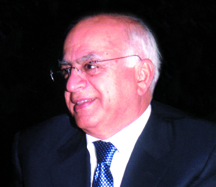Missing names ... rich heritage and social history
the sadu house website states that the house was built in 1936 by yousef al-marzouq in a traditional kuwaiti style, influenced by indian decorative artistic elements.
the house has four open courtyards, with doors, windows, and wooden cabinets adorned with intricate artistic engravings. the house’s distinctive features also include the openings of the “bakdir” (more accurately, badkir) on its various sides.
the construction of the sadu house was supervised by the renowned kuwaiti engineer rashid al-bannai. built from stone and reinforced with concrete, it was the first house of its kind in kuwait, and it had sparked a lot of interest among kuwaitis.
in 1938, the house was purchased by yousef behbehani, also known as yousef sherine. he added a new floor and installed europeanstyle stoves (heaters) in the diwaniya and other rooms.
with urban expansion and the expropriation of real estate for public benefit, the house became part of state property in the early 1970s.
later, the house, along with many other houses and archaeological sites, was transferred to the ministry of information and then to the national council for culture, arts, and letters.
in 1980, the beautiful traditional building became the home of the sadu project in order to preserve the heritage of traditional bedouin weaving
in 2006, the national council for culture, arts, and letters renovated the house to continue its cultural role in showcasing the construction techniques used 90 years ago while highlighting the heritage of bedouin weaving.
this important role continues today, preserving and presenting the rich heritage and social history of kuwait, as well as supporting efforts to maintain the national cultural identity and promote contemporary creative artistic expression.
however, the information provided above differs somewhat from reality, which is the reason behind writing this article. two vital historical and social aspects of the sadu house’s history have either been deliberately or inadvertently overlooked.
according to the sadu house’s website, the house was built in 1936 by the late yousef al-marzouq in the traditional kuwaiti style, influenced by decorative artistic elements from india. the house, which overlooked the seafront, included four open courtyards. in the early 1970s, the building was acquired by the state and became affiliated with the ministry of information, then the national council for culture, arts and letters. in 1980, the traditional building hosted the sadu project to preserve the weaving heritage and became known as the sadu house, the house of traditional weaving heritage.
this text is almost identical to the one placed on a sign at the entrance to the sadu house. however, both texts fail to mention an important historical fact.
when the state took possession of the house, it was owned and lived in by yousef behbehani and his family for nearly 30 years. behbehani received all the sheikhs of kuwait during that time and even years after the state acquired the property. yet, his name is not mentioned on the entrance sign. portions of the website overlook his signifi cant contribution to the house’s history. yousef behbehani did not just buy the house but he added many fl oors, fi replaces, engravings, and made many other improvements.
despite playing a major role in the house’s development, behbehani’s name has been omitted from the historical narrative.
this also happened with the diwaniya (palace) of sheikh khazal bin mardawa, the ruler of muhammara.
the diwaniya is located adjacent to the gate of dasman palace, and the national council for culture, arts, and letters named it “sheikh abdullah al-jaber al-sabah palace” as he was the last owner before the property was transferred to the state.
on this occasion, the al-abduljalil family condemned the omission of the name of judge ahmad al-abduljalil, the second judge in the history of kuwait, as mentioned in a statement from the family, which was included in the documentary fi lm aired by kuwait tv during the inauguration of the new palace of justice building.






